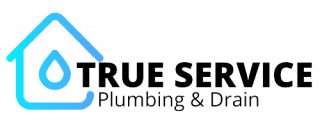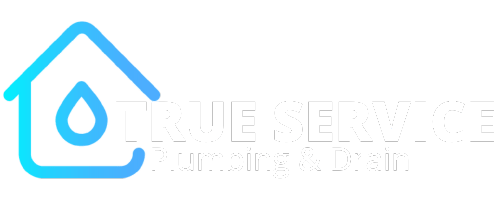Dealing with a clogged toilet is frustrating, especially when the trusty plunger fails to do its job. Knowing how to unclog a toilet when a plunger doesn’t work can save you time, stress, and even money.
Fortunately, there are several effective methods to tackle stubborn clogs using items you may already have at home.
In this guide, we’ll walk you through practical solutions and preventive tips to keep your plumbing running smoothly.
Plus, we’ll let you know when it’s time to call in the professionals.
Why Toilets Clog and When Plungers Fail
Common Causes of Toilet Clogs
Before diving into solutions, it’s essential to understand why your toilet may be clogged. Here are some of the most common reasons:
- Excessive toilet paper: Using too much paper can create blockages that don’t break down easily.
- Flushing non-flushable items: Wipes, feminine hygiene products, and other materials can quickly clog your pipes.
- Pipe build-up: Over time, mineral deposits and debris can narrow your pipes, making them more prone to clogs.
- Sewer line issues: Sometimes, the problem lies deeper in the plumbing system, beyond what a plunger can address.
Why Plungers Don’t Always Work
While plungers are a go-to tool for unclogging toilets, they’re not foolproof. A plunger may fail if:
- The blockage is too far down the pipe.
- You’re using the wrong type of plunger.
- The clog is caused by a hard object that can’t be dislodged with suction.
Understanding these limitations helps you decide when to move on to other methods.
DIY Solutions When a Plunger Doesn’t Work
Here are some of our expert DIY tips on how to unclog a toilet when a plunger doesn’t work:
Use Hot Water and Dish Soap
This simple method works well for soft blockages:
- Heat a pot of water until it’s hot but not boiling.
- Add a few squirts of dish soap to the toilet bowl.
- Carefully pour the hot water into the bowl from waist height to create pressure.
- Wait 15-20 minutes for the soap and water to break down the clog, then flush.
Tip: Avoid using boiling water, as it can crack porcelain.
Try a Homemade Drain Snake
If the clog persists, a makeshift snake can come to the rescue:
- Unwind a wire hanger and create a small hook at one end.
- Insert the hook into the toilet drain and gently maneuver it to catch and pull out debris.
- Be careful not to scratch the porcelain.
Invest in a Toilet Auger
A toilet auger is a plumbing tool designed for tough clogs. Here’s how to use it:
- Insert the auger’s cable into the toilet drain.
- Turn the handle clockwise to break up or retrieve the blockage.
- Pull the cable back out and flush to check if the clog is resolved.
Augers are effective and easy to use, making them a worthwhile investment.
When to Use Chemicals and When to Avoid Them
Pros and Cons of Chemical Drain Cleaners
Chemical cleaners can dissolve tough clogs, but they come with risks:
Pros:
- Effective for grease and organic material.
- Easy to use.
Cons:
- Can damage pipes, especially older ones.
- Harmful to septic systems and the environment.
Environmentally Friendly Alternatives
For a safer option, try baking soda and vinegar:
- Pour one cup of baking soda into the toilet.
- Follow with one cup of vinegar.
- Wait for the fizzing to subside, then add hot water and let it sit.
This method is gentle on pipes and eco-friendly.
Preventing Future Toilet Clogs
Dos and Don’ts for Flushing
- Do: Use only toilet paper and flushable wipes (sparingly).
- Don’t: Flush items like tampons, paper towels, or dental floss.
Regular Plumbing Maintenance
Scheduling routine maintenance can catch potential issues early. Professional plumbers can also clear build-up in your pipes before it becomes a problem.
Educate Your Household
Make sure everyone in your home knows what’s safe to flush. Simple changes in habits can prevent recurring clogs.
When to Call a Professional Plumber
Signs You Need Help
Sometimes, DIY methods aren’t enough. Call a professional if:
- Water backs up into other drains.
- The toilet remains clogged despite multiple attempts.
- You hear gurgling sounds from other fixtures.
Benefits of Hiring a Pro
Professional plumbers have the tools and expertise to solve complex issues without damaging your plumbing.
Whether it’s a deep clog or a sewer line issue, they’ll get the job done right.
Conclusion
Knowing how to unclog a toilet when a plunger doesn’t work doesn’t have to be stressful.
By trying methods like hot water and dish soap, a homemade snake, or a toilet auger, you can tackle most clogs on your own.
Remember to avoid harsh chemicals when possible and take steps to prevent future blockages. And when all else fails, don’t hesitate to reach out to a trusted plumber.
Plumbing Services with True Service Plumbing
When it comes to plumbing issues in Toronto and the GTA, True Service Plumbing is the trusted choice for both commercial and residential customers.
Our licensed professionals provide efficient solutions, whether it’s unclogging stubborn toilets or addressing complex sewer line problems.
Dealing with a plumbing emergency? Let our experts diagnose and resolve the issue, ensuring your plumbing system runs smoothly.
Don’t let clogs disrupt your daily life. Contact True Service Plumbing today for fast, reliable service.


